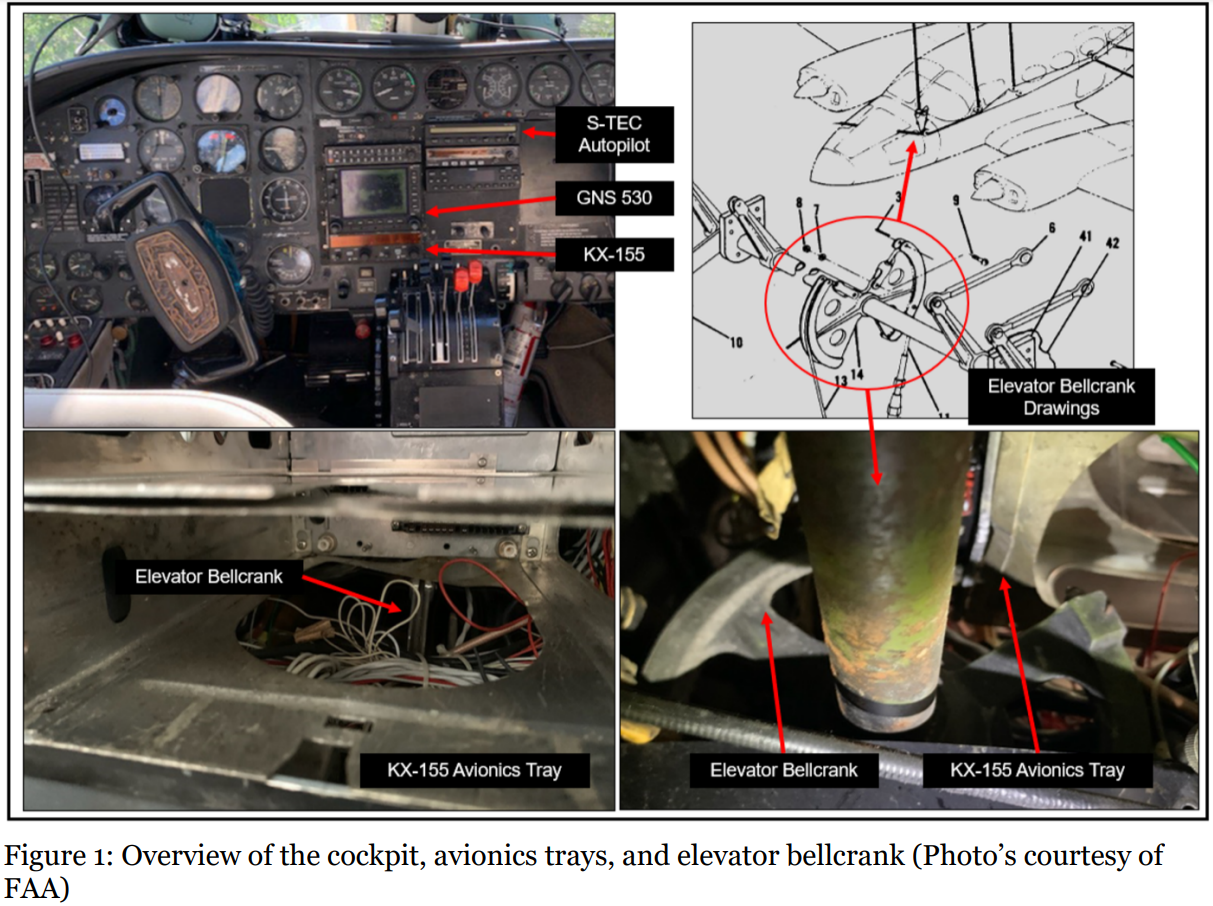
ASN Wikibase Occurrence # 277871
This information is added by users of ASN. Neither ASN nor the Flight Safety Foundation are responsible for the completeness or correctness of this information.
If you feel this information is incomplete or incorrect, you can submit corrected information.
| Date: | Monday 2 May 2022 |
| Time: | 15:50 |
| Type: |  Cessna 414 |
| Owner/operator: | BJK Aviation LLC, opb Air Travel Management LLC |
| Registration: | N46TA |
| MSN: | 414-0466 |
| Year of manufacture: | 1972 |
| Total airframe hrs: | 8762 hours |
| Engine model: | Continental TSIO-520NB |
| Fatalities: | Fatalities: 0 / Occupants: 2 |
| Aircraft damage: | Substantial |
| Category: | Accident |
| Location: | Joseph A. Hardy Connellsville Airport (VVS/KVVS), Connellsville, PA -
 United States of America United States of America
|
| Phase: | Take off |
| Nature: | Test |
| Departure airport: | Connellsville-Joseph A. Hardy Connellsville Airport, PA (KVVS) |
| Connellsville-Joseph A. Hardy Connellsville Airport, PA (KVVS) | |
| Investigating agency: | NTSB |
| Confidence Rating: |
On May 2, 2022, about 1550 eastern daylight time, a Cessna 414 airplane, N46TA, was substantially damaged when it was involved in an accident at Joseph A. Hardy Connellsville Airport (VVS), Connellsville, Pennsylvania. The commercial pilot sustained minor injuries, and the passenger sustained serious injuries. The flight was operated under the provisions of Title 14 Code of Federal Regulations Part 91 as a flight test.
The pilot, who was also a mechanic, had been troubleshooting an autopilot issue before the accident flight. He had removed and reinstalled the autopilot mode control unit in the cockpit panel and planned to complete a local maintenance test flight. The pilot initiated the flight, completed a normal run-up, and reported that nothing was abnormal with the flight controls. During takeoff and after reaching the airplane’s rotation speed, the pilot was unable to move the control wheel aft so that the elevator would move toward the airplane-nose-up direction. The pilot subsequently aborted the takeoff, but insufficient runway remained, and the airplane overran the runway and collided with trees. The fuselage and wings sustained substantial damage.
Postaccident examination of airplane’s left-side cockpit avionics stack, which contained a GPS and radio unit, found that the avionics trays had sagged downward, resulting in the elevator bellcrank to become lodged within the lowest avionics tray. Further, the avionics trays were missing metal straps designed to secure the rear weight of the GPS and radio units to the structure of the airframe.
The avionics tray and elevator bellcrank exhibited significant scraping and metal polishing, which indicated that rubbing contact between the sagging avionics tray and the elevator bellcrank had likely been occurring for some time before the accident flight. Neither the pilot nor the passenger (who was also a mechanic) reported observing any anomalies with the flight controls during the preflight run-up but did report that the airplane hit a dip in the runway as the airplane approached its the rotation speed. Thus, this movement likely moved the tray further downward and into the movement area of the elevator bellcrank.
The Federal Aviation Administration had published advisory circular guidance advising mechanics to ensure that avionics units (including GPS and radio units) were properly secured with rear or side metal straps connected to a structural element on the aircraft. Review of maintenance records found no recent references to work involving the affected avionics or the securing of their avionics trays. The pilot had maintained the airplane for several years and signed off multiple annual inspections. During a postaccident interview, the pilot explained that he was not aware of the need to secure metal side or rear straps on avionics trays. Thus, because the pilot did not realize the need to properly secure the avionics trays to structural airplane elements, the trays eventually contacted the elevator bellcrank and precluded normal operation of the airplane’s pitch controls.
Probable Cause: The pilot/mechanic’s failure to properly secure two airplane avionics units, which resulted in the trays supporting the units to sag downward and become lodged in the movement area of the elevator bellcrank during the accident takeoff.
Accident investigation:
 |
|
Sources:
NTSB
https://data.ntsb.gov/Docket?ProjectID=105031
Location
Images:

Photo: NTSB
Revision history:
| Date/time | Contributor | Updates |
|---|---|---|
| 04-May-2022 18:24 | Captain Adam | Added |
| 18-May-2022 07:04 | Captain Adam | Updated [Time, Nature, Destination airport, Narrative, Photo] |
Corrections or additions? ... Edit this accident description
The Aviation Safety Network is an exclusive service provided by:


 ©2024 Flight Safety Foundation
©2024 Flight Safety Foundation